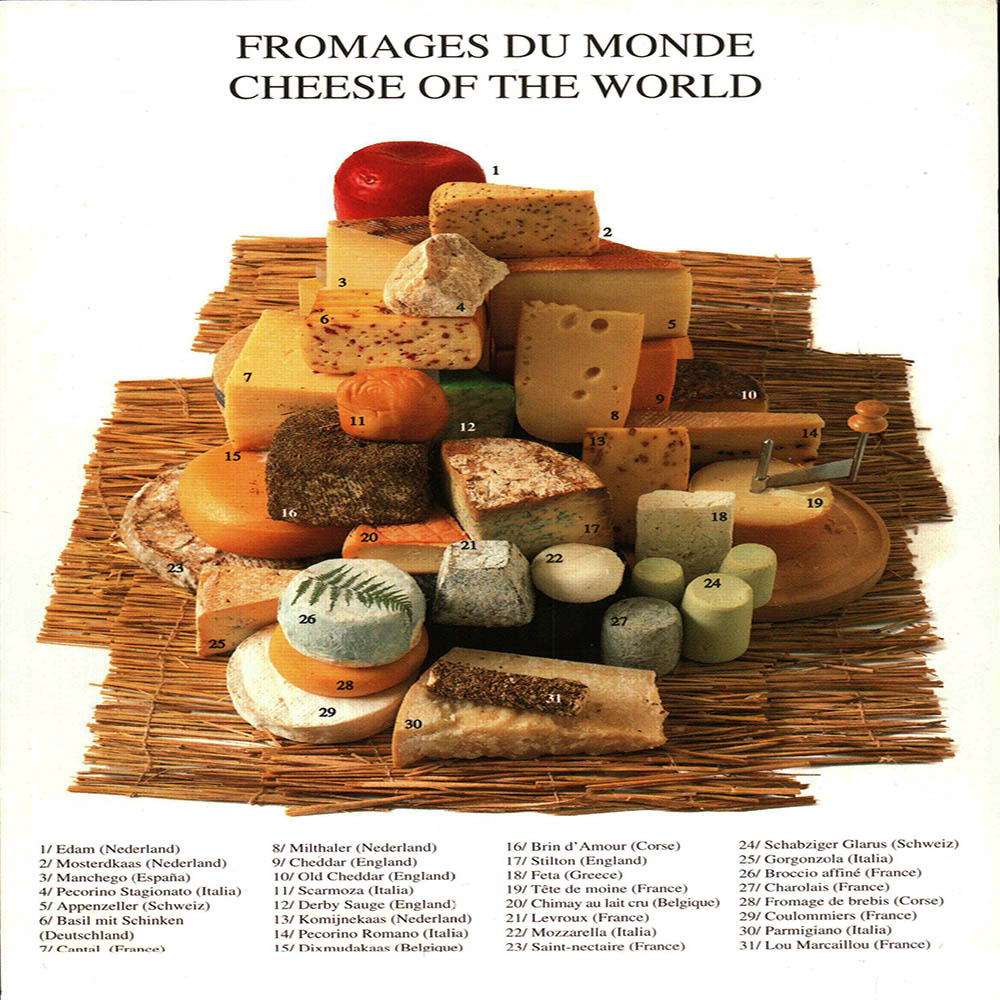
- Country of Origin: The country where the cheese was first developed. In some cases, the name of the cheese is protected, meaning that unless it is produced via strictly controlled methods in a specific region of the world, it cannot bear the name. Roquefort or Manchego are examples of cheeses like this. Other cheeses originate from a certain area but are now produced around the world. Gouda is an example of such a cheese. In general, the latter type of cheese will vary in quality far more than a protected cheese.
- Type of milk: Cheese always starts with milk, but the animal it comes from can make a profound difference on its final flavor. Cow's milk is the mildest, with a creamy, sweet flavor that translates into a more subtle base flavor in the cheese, so aging and ripening play a prominent role in the development of flavor in these cheeses. Sheep's milk has a mild grassy flavor with a tangier backbone and less buttery sweetness than cow's milk. Goat's milk is the gamiest of all, with a definite hay/barnyard funk to it.
- Aging: Most cheeses are aged for a period of time in a temperature-controlled environment. During this process, moisture evaporates leading to a denser paste and a more intense flavor. Bacteria get to work inside the cheese slowly digesting proteins and converting the texture of a cheese from grainy and crumbly to smooth and creamy (eventually, as enough moisture leaves, a cheese can become grainy and crumbly again, like in a good parmesan). Bacteria on the exterior also play a role in developing a rind and enhancing flavor.
195 recipes selected, Page 1 of 10
195 recipes selected, Page 1 of 10

























